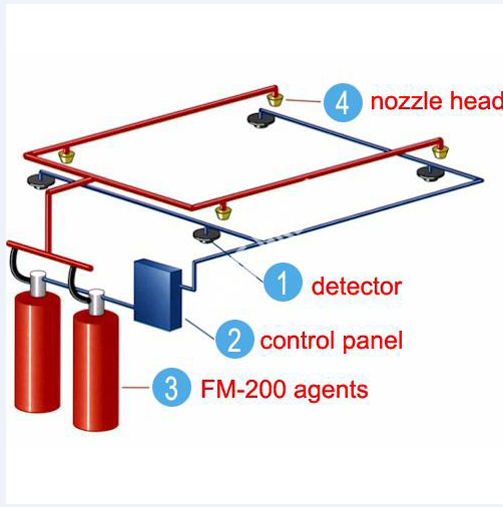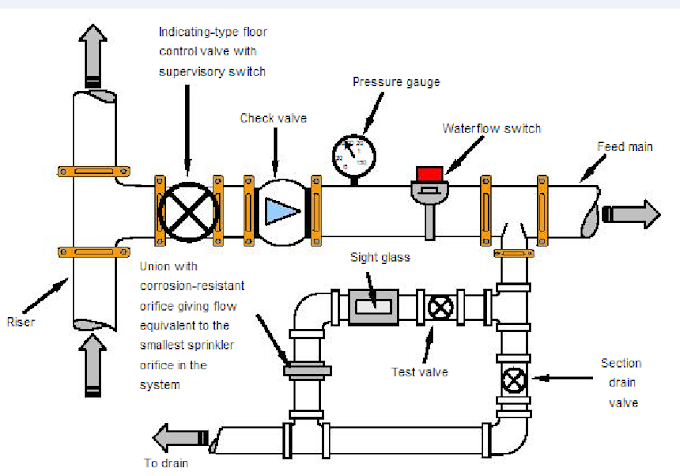Pumps
Introduction
Industrialization imposed an ever increasing demand for moving liquids from one location to another far more practically than by gravity . in order to motivate the liquid to move through the pipes and channels, energy has to be imparted to the liquid . the pipes and channels, energy has to be imparted to the liquid ,usually mechanical , provided by a prime mover is transferred to the liquid by a device called a pump . The English Gravitational System of Units is used throughout the guide as this system is familiar to technical personnel . It has also gained wide acceptance in the hydraulic machinery field both by the manufactures and by their customers . Tables are provided in the Appendix for any necessary conversion .
Classification of Pumps
There are numerous classes and categories of pumps due to the wide variation of processes and due to the wide variation of processes and the distinct requirements categories, and types of pumps utilized in the world today .
- Figure 2 displays the approximate upper limits of pressure and capacity of the three major pump types .
- If the liquid can be handled by any of the three types within the common coverage area, the most economical order of selection would be the following:
- Centrifugal
- Rotary
- Reciprocating
- However, the liquid may not be suitable for all three major pump types . Other considerations that may negate the selection of certain pumps and limit , choice include the following:
- Self priming .
- Air - handing capabilities .
- Abrasion resistance .
- Control requirements .
- Variation in flow .
- Viscosity .
- Density .
- Corrosion .
Kinetic Pumps
- Kinetic pumps are dynamic devices that impart the energy of motion ( kinetic energy ) to a liquid by use of a rotating impeller , propeller, or similar device .
- Kinetic pumps have the following characteristics :
1- discharge is relatively free of pulsation ,
2- Mechanical design lends itself to high through puts , so that capacity limits are seldom a problem,
3-efficient performance over a range of heads and capacities;
4- discharge pressure is a function of fluid density and operational speed ;
5 - they are relatively small high speed devices ;
6 - they are economical .
Centrifugal Pumps
All centrifugal pumps use but one pumping principle in that the impeller rotates the liquid at high velocity , thereby building up a velocity head ( Figure 3) .
- At the periphery of the pump impeller, the liquid is directed into a volute. the volute commonly has an increasing cross sectional area along its length so that as the liquid travels along the chamber, its velocity is reduced .
- Since the energy level of the liquid cannot be dissipated at this point, the conservation of energy law ( Bernoulli's theorem) requires that when the liquid loses velocity energy as it moves along the chamber . it must increase the energy related to pressure . Hence, the pressure of the liquid increases .
- The types of centrifugal pump are identified by the path of liquid flow as indicated below .
Radial Flow
- A pump in which the head is developed principally by the action of centrifugal force. the liquid enters the impeller at the hub and flows radially to the periphery ( Figure 4) Mixed Flow
- A pump in which the head is developed partly by centrifugal force and partly by the lift of the vanes on the liquid .This type of pump has a single inlet impeller with the flow entering axially and discharging in an axial / radial direction ( Figure 5) . Axial Flow .
- This pump , sometimes called a propeller pump , develops most of its head by the propelling or lifting action of the vanes on the liquid , it has a single inlet impeller with the flow entering axially and discharging nearly axially ( Figure 6) .
Turbine Pumps ( regenerative )
- Turbine pumps obtain their name from the many vanes machined into the periphery of the rotating impeller .Heads over 900 feet are readily developed in two - stage pump .
- The impeller , which has very tight axial clearance and uses pump channel rings, displays minimal recirculation losses .The channel rings provide a circular channel around the blades of the impeller from inlet to the outlet .
- Liquid entering the channel from the inlet is picked up immediately by the vanes on both sides of the impeller and pumped through the channel by the shearing action The process is repeated over and over with each pass imparting more energy until the liquid is discharged ( Figure 7 ) .
Special Pumps
Viscous Drag or Disk Pump
- The viscous drag pump operation utilizes two principles of fluid mechanics : boundary layer and viscous drag . these phenomena occur simultaneously when ever a surface is moved through a liquid .
- Boundary layer phenomenon occurs in the disk pump when liquid molecules lock onto the surface roughness of the disk rotor . A dynamic force field is developed . This force field produces a strong radially accelerating friction force gradient within and between the molecules of the fluid and the disks, thereby creating a boundary layer effect .
The resulting frictional resistance force field between the interacting elements and the natural inclination of a fluid to resist separation of its own continuum, creates the adhesion together are the motivators in transferring the necessary tangential and centrifugal forces to propel the liquid with increasing momentum towards the discharge outlet located at the periphery of the disks (Figure 8 ) .
Advantages of using a viscous drag pump
- Minimal wear with abrasive materials
- gentle handling of delicate liquids
- Ability to easily handle highly viscous liquids .
- freedom from vapor lock .
Screw centrifugal pump
- This pump incorporates a large - diameter screw instead of the more common radial impeller that is found in centrifugal pumps (Figure 9) .
- Thick sludge and large particle solids can be moved because of the low net positive suction head (NPSH)requirements . which result from the utilization of the inducer - like impeller .
- Because the pumped material enters at a low entrance angle, a low shear , low turbulence condition exists, which results in very gentle handing of the liquid . The gentle handing makes it possible to pump slurries of fruits and vegetables without undue breakup of constituents .
The pump can also be operated in the reverse direction. This characteristic is advantageous for clearing clogged suction lines .
Rotating Case Pump
- The basic concept of this pump is unique ( Figure 10 ) . Liquid enters the intake manifold and passes into a rotating case where centrifugal force accelerates it . A stationary pickup tube situated on the inner edge of the case , where pressure and velocity are the greatest, converts the centrifugal energy into a steady pulsation - free high pressure stream .
- The following characteristics attest to the simplicity of the pump :
- only one rotating part (the casing )
- The seal is exposed only to suction pressure
- No seal is required at the high pressure discharge
- The pump , turning at speeds from 1.325 to 4500 rpm will generate heads approximately four times that of a single stage centrifugal pump operating at a similar speed . Single stage head up to 3000 feet are readily attainable even in sizes up to 200 gpm . vortex pump
- A vortex pump comprises a standard concentric casing with an axial suction intake and a tangential discharge nozzle ( Figure 11). The straight radial - bladed impeller is axially recessed in the casing . The recess can range from 50% to 100% where the impeller is completely out of the flow stream . the rotating impeller creates a vortex field in the casing that motivates the liquid from the centrally located suction to the tangentially located discharge . Because the pumped liquid does not have to flow through any vane passages, solid content size is limited only by the suction and discharge diameters .
- A vortex pump can handle much larger percentages of air and entrained gases than a standard centrifugal pump because pumping action is by induced vortex rather than by impeller vanes .
- Advantage of a vortex pump
- Can handle high solid
- Content liquids enrained gas liquids and stringy sewage while requiring a relatively low NPSH .
- Disadvantage of a vortex pump
Comparatively low efficiency of 35% to 55%
Positive displacement pumps
- In these pumps , the liquid is forced to move because it is displaced by the movement of a piston, vane, screw , or roller. The pumps force liquid into the system regardless of the resistance that may oppose the transfer .
- Some common characteristics of these pumps are
- daptable to high pressure operation
- variable flow rate through the pump is a possible (auxiliary damping systems may be used to reduce the magnitude of pressure pulsation and flow variation )
- Maximum through puts are limited by mechanical considerations .
- Capable of efficient performance at extremely low volume throughput rates .
- Advantage of positive displacement pumps
Rotary Pump
- This pump is a positive displacement pump that consists of the following :
- A chamber that contains gears, cams , screws, lobes, plungers, or similar devices actuated by rotation of the drive shaft .
- No separate inlet and outlet valves .
- Tight running clearances .
Vane pump
- This pump utilizes vanes in the form of blades, buckets,rollers, or slippers, which act in conjunction with a cam to draw liquid into and force it from the pump chamber .
- A vane pump may be constructed with vanes in either the rotor or stator and with radial hydraulic forces on the rotor or stator and with radial hydraulic forces on the rotor balanced or unbalanced. the vane in rotor pumps may be made with constant or variable displacement pumping elements .
- Figure 12 illustrates a vane in rotor constant displacement unbalanced pump .
Piston pump
- In this pump , liquid is drawn in and forced out by pistons that reciprocate within cylinders . the valving is J 20
Thank You
















1 Comments
You have shared a nice article about the pump. Your service is very interesting and useful. I liked it. If anyone wants to get more information about the pump, then visit on Graco pneumatic pump suppliers
ReplyDelete